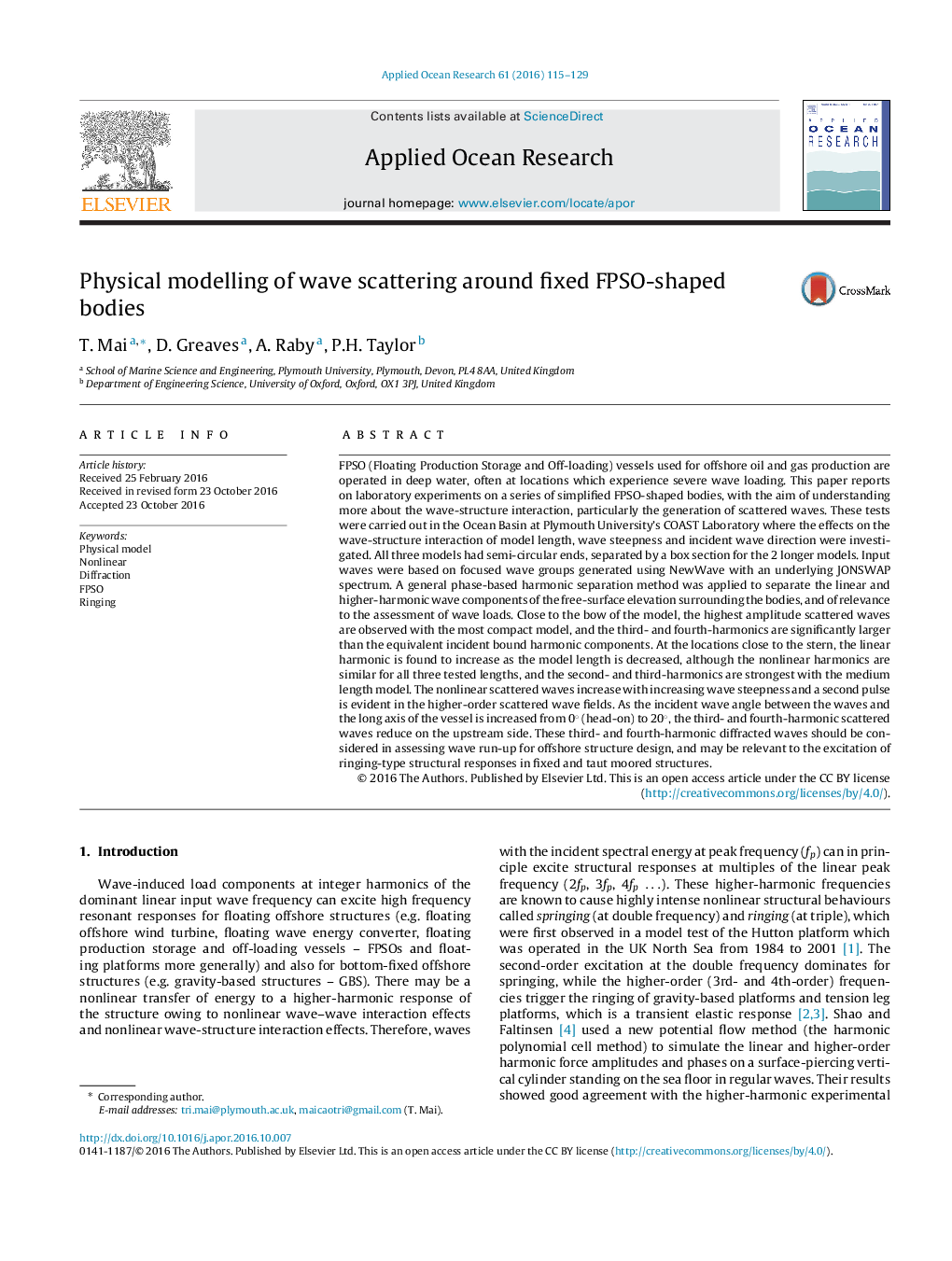| کد مقاله | کد نشریه | سال انتشار | مقاله انگلیسی | نسخه تمام متن |
|---|---|---|---|---|
| 5473334 | 1520242 | 2016 | 15 صفحه PDF | دانلود رایگان |
عنوان انگلیسی مقاله ISI
Physical modelling of wave scattering around fixed FPSO-shaped bodies
دانلود مقاله + سفارش ترجمه
دانلود مقاله ISI انگلیسی
رایگان برای ایرانیان
موضوعات مرتبط
مهندسی و علوم پایه
سایر رشته های مهندسی
مهندسی دریا (اقیانوس)
پیش نمایش صفحه اول مقاله

چکیده انگلیسی
FPSO (Floating Production Storage and Off-loading) vessels used for offshore oil and gas production are operated in deep water, often at locations which experience severe wave loading. This paper reports on laboratory experiments on a series of simplified FPSO-shaped bodies, with the aim of understanding more about the wave-structure interaction, particularly the generation of scattered waves. These tests were carried out in the Ocean Basin at Plymouth University's COAST Laboratory where the effects on the wave-structure interaction of model length, wave steepness and incident wave direction were investigated. All three models had semi-circular ends, separated by a box section for the 2 longer models. Input waves were based on focused wave groups generated using NewWave with an underlying JONSWAP spectrum. A general phase-based harmonic separation method was applied to separate the linear and higher-harmonic wave components of the free-surface elevation surrounding the bodies, and of relevance to the assessment of wave loads. Close to the bow of the model, the highest amplitude scattered waves are observed with the most compact model, and the third- and fourth-harmonics are significantly larger than the equivalent incident bound harmonic components. At the locations close to the stern, the linear harmonic is found to increase as the model length is decreased, although the nonlinear harmonics are similar for all three tested lengths, and the second- and third-harmonics are strongest with the medium length model. The nonlinear scattered waves increase with increasing wave steepness and a second pulse is evident in the higher-order scattered wave fields. As the incident wave angle between the waves and the long axis of the vessel is increased from 0° (head-on) to 20°, the third- and fourth-harmonic scattered waves reduce on the upstream side. These third- and fourth-harmonic diffracted waves should be considered in assessing wave run-up for offshore structure design, and may be relevant to the excitation of ringing-type structural responses in fixed and taut moored structures.
ناشر
Database: Elsevier - ScienceDirect (ساینس دایرکت)
Journal: Applied Ocean Research - Volume 61, December 2016, Pages 115-129
Journal: Applied Ocean Research - Volume 61, December 2016, Pages 115-129
نویسندگان
T. Mai, D. Greaves, A. Raby, P.H. Taylor,